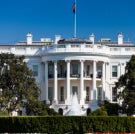Passenger aviation worldwide has become extraordinarily safe. In 2023, there were no fatal crashes involving passenger jet aircraft on scheduled flights.
Of the two fatal accidents – both involving propellor aircraft – the first and deadliest was in Nepal. Yeti Airlines flight YT673 from Kathmandu crashe on approach to Pokhara. All 72 passengers and crew died in an accident attributed to pilot error.
We have yet to find out what went wrong with the latest tragedy, which took place on the same route. The Saurya Airlines commuter jet was taking off from the Nepali capital when it rolled and crashed into a ravine. The pilot survived but the remaining 18 on board did not.
The calamity takes Nepal to a tragic score of 14 crashes in 14 years – a rate way beyond any other country in the world.
The current sequence began in August 2010, when 14 people lost their lives on an Agni Air domestic flight from Kathmandu to Lukla, which had turned back due to a technical problem.
Twenty-two more people died aboard a Tara Air Twin Otter during a domestic flight to Kathmandu in December 2010.
In September 2011, 19 people lost their lives on the approach to Kathmandu on a Buddha Air Beechcraft.
A year later, seven British passengers were among the 19 people who died aboard a Sita Air Dornier 228 that came down shortly after take off from Kathmandu, destination Lukla. They were at the start of what was to be a three-week trek.
The crash was blamed on “a combination of factors, including an overweight aircraft with too much luggage stowed on board”.
The litany of tragedy continues. Crashes in parts of Africa, South America and the former Soviet Union are far from unknown. But accident rates in Nepal are a different order of magnitude – resembling those from the early days of mass passenger air transport in the 1950s rather than the ultra-safe 2020s.
The challenging terrain and weather in Nepal demand pilots and engineers of the highest standards, but time and again they fall short.
The nation’s airlines tend to use old, ill-maintained aircraft; the Saurya Airlines plane was over 20 years old, which is not an issue with good technical support. But Nepal has inadequate training in, and enforcement of, international aviation norms.
All Nepali airlines are banned from the European Union because of safety shortcomings.
For the past decade, the International Civil Aviation Organization has sought to improve safety under its “No Country Left Behind” initiative. The aim of this UN body is to harmonise “Standards and Recommended Practices” – those vital norms that keep the vast majority of passengers and crew. The aim is to give every nation “access to the significant socio-economic benefits of a safe and reliable aviation system”.
Travellers to the mountain kingdom must continue to weigh the risks of flying – while also being aware that Nepal’s roads are lethal, too, with an accident rate six times higher than in the UK.
There is little hope that this litany of tragedy will end soon.
Source: independent.co.uk



